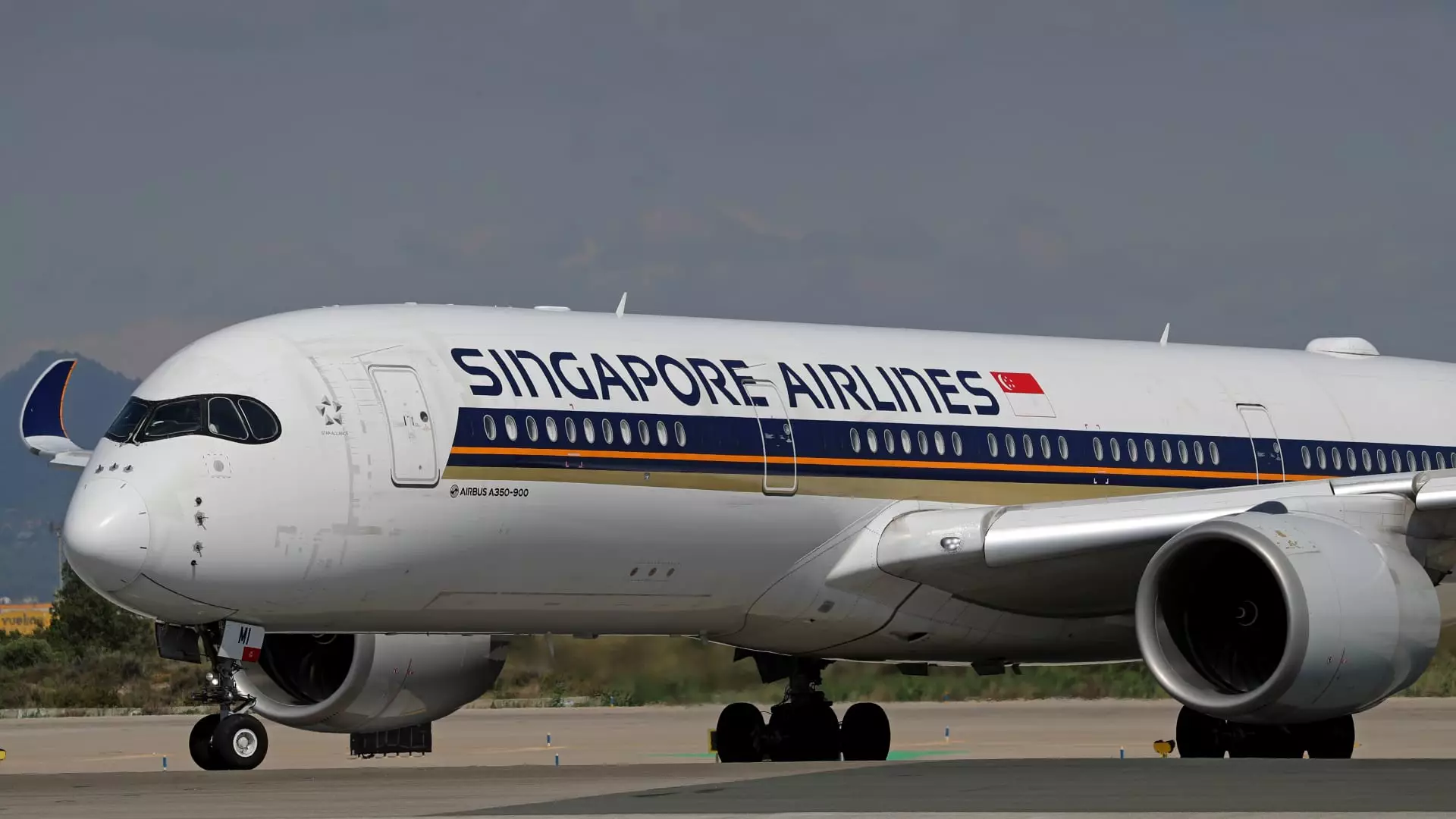In a striking development, Singapore Airlines has reported a significant dip in its net profit for the first half of its fiscal year. The airline’s earnings fell nearly 50%, sparking a notable reaction from investors that saw its stock plummet upon the announcement. The airline attributed this downturn to a combination of diminishing yields and escalating competition in the market, presenting a challenging environment for its operations moving forward.
The reported net profit for the period from April to September totaled 742 million Singapore dollars (approximately $559 million), a staggering 48.5% decline compared to the previous year’s 1.44 billion Singapore dollars. Operating profit mirrored this distressing trend, falling 48.8% to 796 million Singapore dollars, while total revenue witnessed a modest increase of 3.7%, reaching 9.5 billion Singapore dollars. The figures illustrate a puzzling yet alarming scenario where revenue growth fails to translate into profitability, highlighting the fierce competitive pressures faced by the airline.
Singapore Airlines’ management has pointed fingers at increased market capacity and stronger competition as primary culprits behind the profit slide. Chief Commercial Officer Lee Lik Hsin emphasized that global rivals are ramping up their operations post-COVID-19, which in turn pressures yield prices. Interestingly, despite a year-on-year passenger traffic increase of 7.9%, it was overshadowed by an 11% expansion in passenger capacity. This imbalance resulted in a reduction of the passenger load factor, down 2.4 percentage points to 86.4%. Such statistics reveal the airline’s struggle to fill its planes amid an oversaturated market.
Despite the financial setbacks, Singapore Airlines remains resolute in its long-term growth strategy. Executives have made it clear that the airline will not compromise on capacity growth even in the face of rising competition. Lee asserts that adaptability is key to ensuring that the airline directs its growth where it will be most beneficial. This bold stance suggests a commitment to not just surviving but thriving in a challenging landscape.
Furthermore, the airline has introduced a substantial investment initiative, unveiling a SG$1.1 billion program aimed at retrofitting its long-range and ultra-long-range Airbus A350 jets. With plans to roll out the first retrofitted jet by 2026 and complete the program by 2030, Singapore Airlines is signaling its intent to bolster its infrastructure while navigating tough market conditions.
Looking ahead, Singapore Airlines acknowledges the robust demand for air travel in the latter half of the fiscal year. However, the carrier is acutely aware that the operational landscape will continue to be intensely competitive. The juxtaposition of increased demand against a backdrop of heightened competition presents a complex scenario for the airline, likely requiring innovative strategies and tactical adjustments to navigate its future successfully. As Singapore Airlines pushes forward, it remains critical to strike a balance between expansion and profitability in this evolving aviation climate.


Leave a Reply